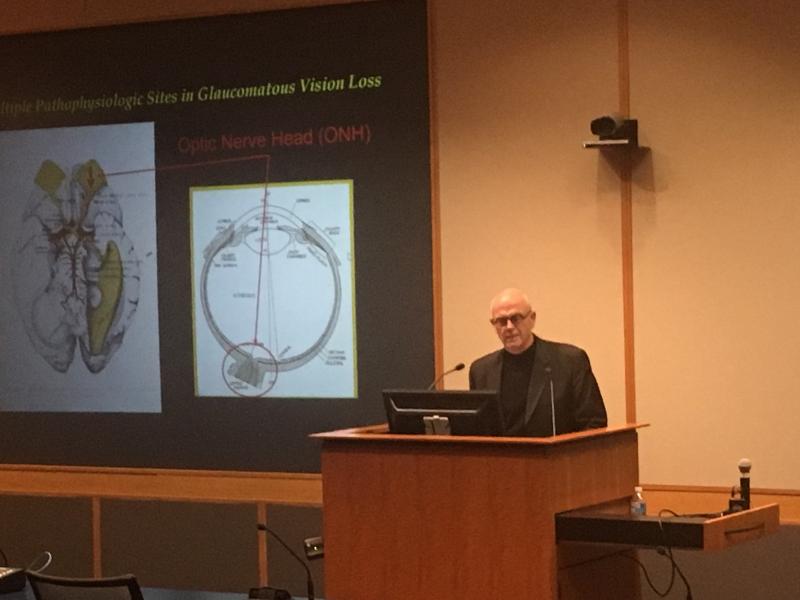
Claude F. Burgoyne, MD delivered the Distinguished Joseph M. Bryan Research Lecture on October 26, 2017. Dr. Byrgoyne is a well-respected glaucoma clinician and surgeon. He is Senior Scientist, Van Buskirk Chair for Ophthalmic Research, and Director of the Optic Nerve Head Research Laboratory at Devers Eye Insitiute in Portland, Oregon.
In Dr. Burgoyne's lecture titled “From Biomechanics to Proteomics - Toward the Mechanisms of Axonal Insult in Glaucoma” he summarizes 20 years of technique development and study results pertinent to the characterization of ONH connective tissue deformation and remodeling in the unilateral monkey experimental glaucoma (EG) model. In it will propose that the defining pathophysiology of a glaucomatous optic neuropathy involves deformation, remodeling, and mechanical failure of the ONH connective tissues. We view this as an active process, driven by astrocyte, microglial, fibroblast and oligodendrocyte mechanobiology. These cells, and the connective tissue phenomena they propagate, have primary and secondary effects on retinal ganglion cell (RGC) axon and laminar beam and retrolaminar capillary homeostasis that may initially be “protective” but eventually lead to RGC axonal injury, repair and/or cell death. The primary goal of this talk is to summarize our 3D histomorphometric and optical coherence tomography (OCT)-based evidence for the early onset and progression of ONH connective tissue deformation and remodeling in monkey EG. A second goal is to explain the importance of including ONH connective tissue processes in characterizing the phenotype of a glaucomatous optic neuropathy in all species. A third goal is to summarize our own and other’s efforts to move from ONH morphology to the cell biology of connective tissue remodeling and axonal insult early in the disease. A final goal is to facilitate the translation of our findings and ideas into neuroprotective interventions that target these phenomena for therapeutic effect.